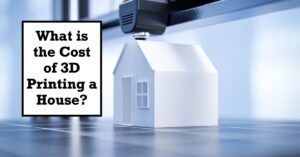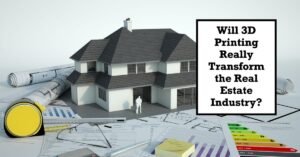Imagine a world where homes can be built in a fraction of the time and at a significantly lower cost than traditional construction methods. That's the promise of 3D printing house — a budding technology that is reshaping the concept of affordable housing. With innovations in construction technology, 3D printed houses are now being viewed not just as a novelty, but as a practical solution to the housing crisis faced in many areas today.
Traditional housing is often plagued with high prices, driven by factors such as expensive labor, fluctuating material costs, and long construction timelines. In contrast, 3D printing offers remarkable potential for slashing these costs dramatically, providing a clear path toward more accessible housing solutions.
3D Printing House Price: Your Guide to Affordable Housing
🏗
Key Takeaways
- 💸 Cost-Effective Solutions: 3D printing can significantly lower construction costs.
- ⏱ Reduced Construction Time: Homes can be completed in days, not months.
- 💡 Material Innovations: Uses concrete and unique materials for financial savings.
- 👷 Labor Efficiency: Reduces the need for skilled labor compared to traditional methods.
- 🎨 Design Flexibility: Custom designs can be created with minimal extra cost.
Cost Breakdown of 3D Printed Houses
Material Costs
One of the biggest advantages of 3D printing in construction is its ability to utilize advanced materials effectively. Most 3D printed houses are made using specialized concrete mixtures that allow for quick setting and durability. For instance, companies like ICON can produce a structure for as low as $4,000, leveraging only basic materials needed for construction. Traditional homebuilding often incurs elevated costs for various construction elements, amplifying the financial burden on housing initiatives.
Want to learn more about 3D printing affordability? Read more here.
Construction Time
The astounding ability to print a house in 24 to 48 hours is nothing short of revolutionary. Unlike traditional construction methods, which can span months due to weather interruptions and labor availability, 3D printing expedites the entire process. With accelerated construction, significant savings can be realized from labor costs and greater housing availability, addressing urgent needs for homes.
Labor Costs
When utilizing 3D printing, the demand for a large workforce is significantly reduced. Traditional building methods require numerous specialized laborers—such as carpenters and electricians—overseeing the construction process. In contrast, 3D printing requires fewer skilled workers, which can slash labor expenses up to 50%, as reported by sources like CyBe Construction.
Design Flexibility
Perhaps one of the most exciting aspects of 3D printing technology is the incredible design flexibility it offers. Unlike pre-fabricated homes or templated designs in traditional construction, 3D printing enables unique designs and options with little or no significant cost increase. Homeowners can now create custom housing that reflects their personal preferences and cultural needs, all while staying on budget.
Factors Influencing 3D Printed House Prices
Size and Complexity
As with traditional homes, the size and complexity of a 3D printed house will greatly influence the final price. A modest 600-square-foot home may cost about $4,000 to produce, while larger projects can run significantly higher depending on material and printing time requirements. Architectural intricacies and innovative features can also factor into total project costs.
Location and Land Costs
Just as with traditional homes, location has a considerable impact on the pricing of 3D printed houses. Urban areas usually face higher land costs compared to more rural locations, which means that projected prices may not always reflect the bottom-line savings made during construction. For example, the first 3D-printed house in Detroit is listed for $224,500, emphasizing the costs tied to effective locations.
Technology and Equipment
The specific technology at play, including the type of 3D printers and special construction materials, affects overall costs. Advanced 3D printers and unique building materials require substantial initial investments. Nevertheless, as the technology becomes increasingly mainstream and builders invest in 3D printing, costs are projected to drop, making this method of construction more accessible for developers and homebuyers alike.
Regulations and Building Codes
Local regulations can impose additional costs on the construction of 3D printed homes. Although 3D printing brings about innovative possibilities, adhering to safety codes and zoning laws can add significant time and financial burdens. Builders must navigate through local codes to ensure compliance, which might vary widely across different regions.
Comparing 3D Printed Homes to Traditional Homes
Price Comparisons
When we stack 3D printed home prices against traditional home costs, the differences are stark. For example, while traditional homes can cost tens to hundreds of thousands of dollars, 3D printed homes can often come in at 50% less under certain conditions. As more data become available, the disruptive power of 3D printing in the housing market becomes increasingly evident.
Pros and Cons of 3D Printing
Here’s a closer look at the pros and cons of 3D printing versus traditional methods:
- Pros:
- Affordability: Significant savings can make homeownership attainable for more individuals.
- Construction Speed: Homes can be completed in days as opposed to months.
- Innovative Designs: Unique and customizable options lend diversity to housing solutions.
- Cons:
- Material Limitations: Not all traditional materials are conducive to 3D printing.
- Scaling Challenges: There may be constraints in producing large numbers quickly.
- Regulatory Hurdles: Compliance with building codes can lead to delays.
The Impact of 3D Printing on the Housing Market
The impact of 3D printing on the housing market is profound. As noted by various experts, including sources like HUD, the application of this novel technology has the potential to increase the stock of affordable housing significantly. 3D printing could introduce new business models, allowing homes to be produced on-demand and reducing waste associated with traditional construction methods.
For instance, according to a recent report, 3D printing is about 10% to 30% cheaper compared to traditional construction methods. If 3D printing gains popularity, it could reshape the real estate market by increasing the availability of affordable homes while potentially influencing land prices due to rising demand.
Future Potential of 3D Printed Housing
Looking ahead, the future of 3D printed housing seems bright. As technology develops and becomes more integrated into mainstream construction, we could witness a significant reduction in housing costs across the board. Traditional construction companies may begin to explore hybrid models that include 3D printing as a method to expand design options and address housing needs quickly.
Moreover, movement toward sustainable materials and environmentally friendly practices within the 3D printing realm could not only revolutionize how homes are built but also mitigate some of the conventional construction’s negative environmental impacts. The ripple effect of these changes could lead to a renewed focus on creating quality living environments for all.
With the ongoing challenges in the housing sector, such as rising costs and limited availability, 3D printing offers a realistic and innovative alternative. As communities recognize the benefits, we can expect more initiatives to optimize and leverage 3D printing technologies to create affordable and sustainable housing solutions.
Recommended Read:
Future of 3D Printing in Real Estate: Insights and Predictions



